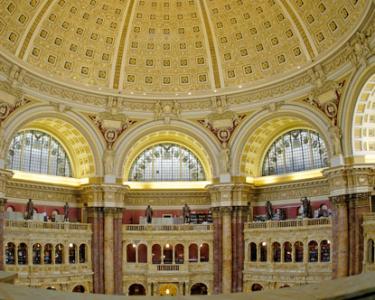For a History of that Space Without Time?

The Library of Congress recently announced the National Digital Stewardship Alliance (NDSA), a collaboration between government agencies, educational institutions, non-profit organizations, and businesses to preserve and provide access to “selected databases, web pages, video, audio and other digital content with enduring value.” The NDSA will give new shape to the internet, confronting both its sprawling amorphousness by imposing a hierarchical structure through the selection of content worthy of preservation, and its perpetual present, by establishing the enduring amidst so much ephemera. This will undoubtedly be an exciting process to follow, as the decisions involved may profoundly affect the ways in which our present will be viewed by the future.
In a recent a recent post on BookTwo.org entitled “On Wikipedia, Cultural Patrimony and Historiography” and the related talk, “The Value of Ruins,” self-described “editor, publisher, writer, curator, producer, programmer, designer and cook” James Bridle grapples with the temporal flatness of the internet. He takes as a point of departure words delivered by cyberpunk novelist William Gibson at a Book Expo America luncheon talk: “If you’re fifteen or so, today, I suspect that you inhabit a sort of endless digital Now, a state of a-temporality enabled by our increasingly efficient communal prosthetic memory.”
For Bridle, this a-temporality translates into a locus of cultural production from which it is difficult to draw out narratives. Understanding Wikipedia as a metonym for the internet itself, Bridle avers what many have suggested: that the wisdom of Wikipedia articles rests in great part in their edit history--though most web sites have no archive comparable to Wikipedia's edit history. Bridle demonstrates the monumentality of edit histories with a material archive of one: a twelve-volume printout of the more than 12,000 edits to “The Iraq War” Wikipedia article.
Internet Archive, a San Francisco-based non-profit organization that forms part of the NDSA, counters the a-temporality of the internet with its Wayback Machine, an archive of more than 150 billion web pages from 1996 and 2010. The entire collection, which contains more information than the world's largest libraries--almost two petabytes of data, growing at a rate of 20 terabytes per month--is housed in a single shipping container in Santa Clara. The experience of browsing the archive, (I spent some time with early versions of the New York Times and Berkeley web sites), is a little like rifling through shoeboxes of dusty old postcards at a flea market: they offer some nostalgic charm, but you can't really imagine what you might do with them.
Two of Internet Archive’s recent collaborations may illustrate the challenges faced by the NDSA in selecting content worthy of preservation. One, a display at the Smithsonian Museum, features official web sites from the 1996 presidential campaign: likely candidates for digital preservation. A second collaboration, with the Library of Congress, is a sculpture exhibiting a smattering of web pages from 1997--culled from sites of less evident worth for posterity, but which nonetheless form an important monument to design history and national identity.
What seems critical in tackling so weighty a series of questions about what will be included in the national digital archive is the openness of the process. In Archive Fever, Jacques Derrida writes: “There is no political power without control of the archive, if not of memory. Effective democratization can always be measured by this essential criterion: the participation in and access to the archive, its constitution, and its interpretation.” The extensive roster of NDSA partners, and the broad participation in internet it stewards, then, is heartening.